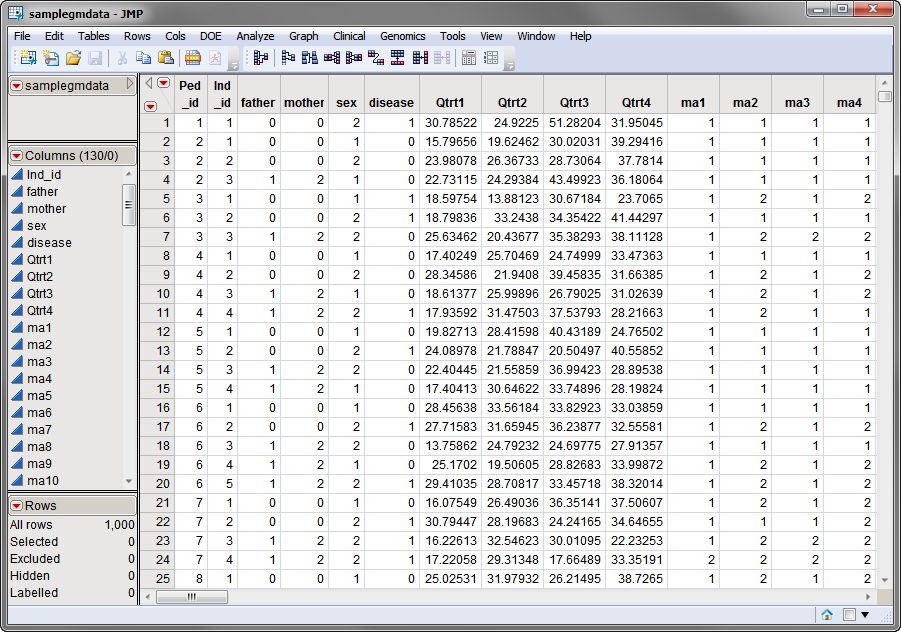The Kinship Matrix process creates a matrix containing either kinship (coancestry) coefficients or covariance coefficients (coefficients of relationship) between pairs of related individuals. It is required that the pedigree observations are ordered in the Input Data Set so that individuals are defined before being used as the parents of other individuals, and it is required that any individual listed as the parent of another individual be included in the data set.
Calculated coefficients can be used as random effects in order to analyze family data in an association setting, for example in the Marker-Trait Association or SNP-Trait Association processes that can accommodate random effects.
One data set is required to run the Kinship Matrix process. The first, the Input Data Set, contains all of the marker data. The sample data set used in the following example, the samplegmdata data set, was computer generated as described in Sample Genetic Marker Data. It consists of 1000 rows of individuals with 130 columns corresponding to data on these individuals. Marker data is presented in the two-column format. This data set is partially shown below. Note that this is a wide data set; markers are listed in columns, whereas individuals are listed in rows.
For detailed information about the files and data sets used or created by JMP Life Sciences software, see Files and Data Sets.
Output from this process is accessed from a Results window. Refer to the Kinship Matrix output documentation for detailed descriptions and guides to interpreting your results.
